Stepping into the world of home treadmills is exciting, but let’s be honest – the sheer variety can make your head spin!
Manual, Motorized, Folding, Incline, Curved… what does it all mean, and more importantly, which one is the right choice for you as a beginner?
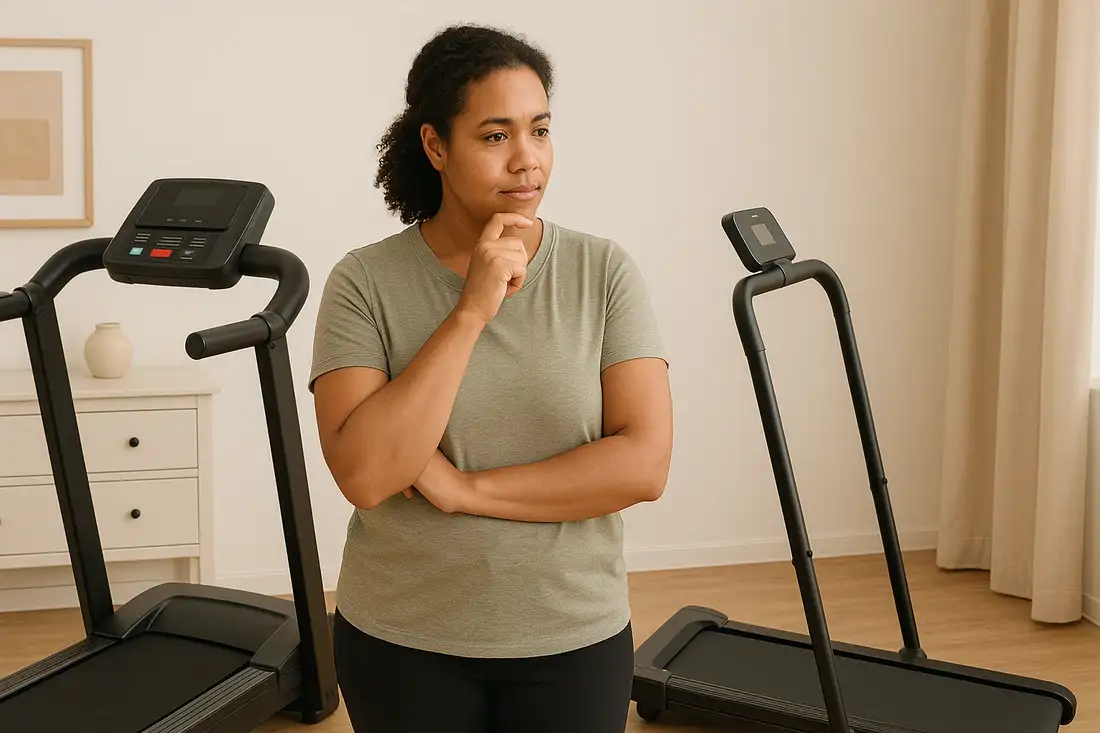
You might have seen these terms mentioned in our main page, Ultimate Beginner’s Guide to Treadmills.
Now, we’re going to unpack them.
This isn’t just a list; it’s your personal guide to understanding the different types of treadmills explained in a way that helps you connect them to your specific needs, budget, space, and fitness goals.
Think of this as a consultation to help you find your perfect treadmill match.
We’ll look at how each type works, who it’s ideally suited for, and the key pros and cons from a beginner’s viewpoint.
Let’s navigate the options together!
The Treadmill Lineup – A Quick Glance Comparison
Before we dive into the details, here’s a quick overview to help you see the main differences at a glance:
| Treadmill Type / Feature | Power Source | Ideal Beginner Profile (Brief) | Key Advantage | Typical Price Range |
| Manual | User (Self-Powered) | Walkers, budget-focused, simple needs | Lowest Cost, No Electricity | $ |
| Motorized (Standard) | Electric Motor | Most Beginners (Walk/Jog/Run), wants features | Versatility, Ease of Use | $$ |
| Folding (Feature) | Electric Motor | Space-constrained users | Space Saving | $$$ |
| Incline (Feature) | Electric Motor | Intensity seekers, hill simulation focus | High Intensity Boost | $$$ |
| Curved | User (Self-Powered) | Performance-focused runners, higher budget | Potential Form/Intensity Aid | $$$$ |
Price Range Key:
- $ = Budget (<$500)
- $$ = Mid-Range ($500
−1000) - $$$ = Upper Mid-Range ($1000
−2000) - $$$$ = Premium (>$2000)
- Prices are approximate.
Deep Dive – Understanding Each Treadmill Type
Now, let’s look closer at each category:
The Stripped-Down Starter – Manual Treadmills
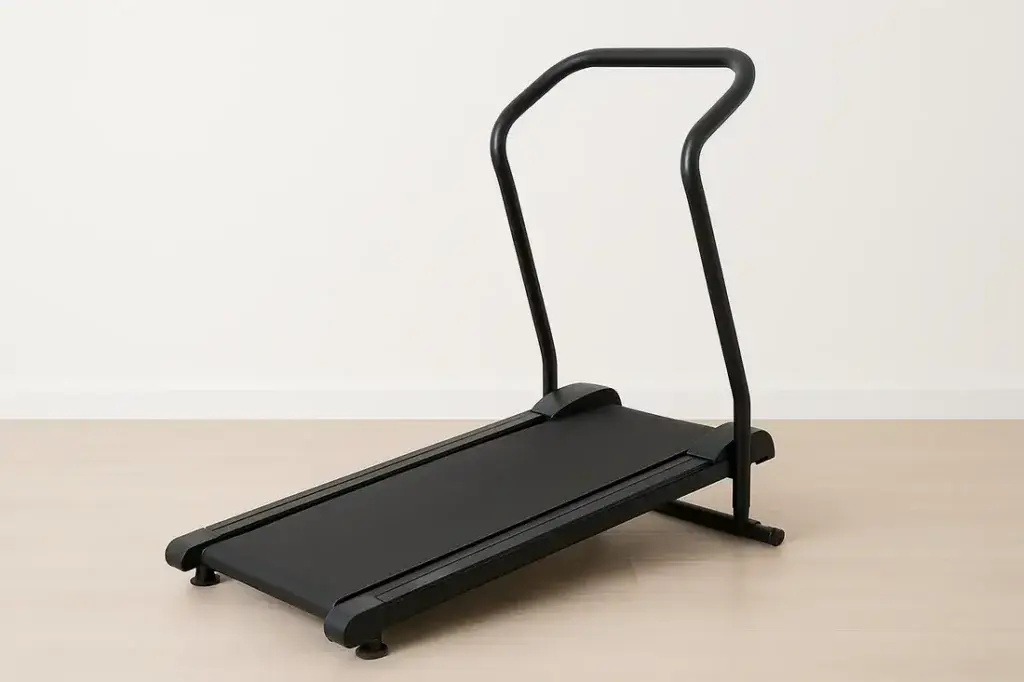
- What is it & How it Works: Imagine a treadmill powered purely by your own effort. As you walk or run, your feet push the belt backward. There’s no motor involved. Many have a slight, fixed incline to make it easier to get the belt moving.
- Ideal Beginner Profile: Best suited for those who will primarily be walking, are on a tight budget, value absolute simplicity, or need a machine that requires zero electricity.
- Beginner Pros: The most affordable option. No electricity bill impact. Simple mechanics mean less can potentially go wrong.
- Beginner Cons/Considerations: It can take more effort to start and maintain a consistent belt speed, especially initially. The feel is generally less smooth than motorized options. Features are minimal to non-existent (no workout programs, often basic or no console). Not practical for serious jogging or running.
The All-Rounder Choice – Standard Motorized Treadmills
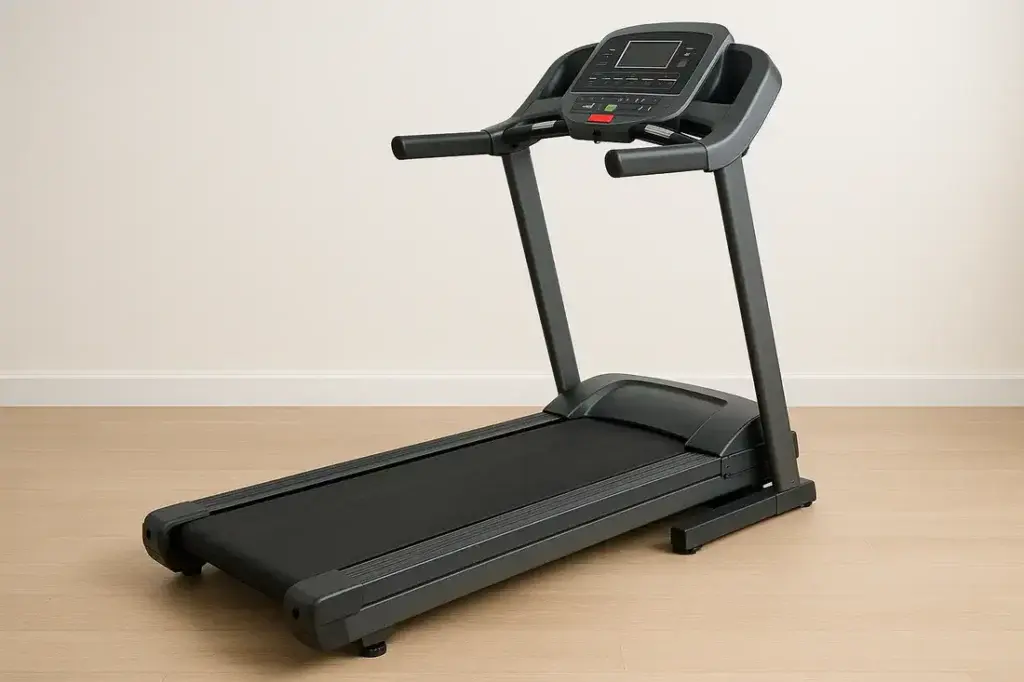
- What is it & How it Works: This is the most common type you’ll find for home use. An electric motor powers the belt, allowing you to select and maintain precise speeds using console buttons. Most also offer motorized incline adjustments.
- Ideal Beginner Profile: Honestly, this suits most beginners. Whether you plan to walk, jog, or eventually run, a motorized treadmill offers the versatility and control needed. It’s perfect if you want a smooth workout experience and potentially some built-in programs or features.
- Beginner Pros: Provides a smooth, consistent belt speed making workouts feel easier and more controlled. Simple push-button control of speed and incline. Offers the widest range of features (pre-set workouts, heart rate monitoring, Bluetooth connectivity, etc., depending on the model). Suitable for all types of cardio – walking, jogging, running. Allows for beneficial impact exercise, which can contribute to maintaining bone density.
- Beginner Cons/Considerations: More expensive than manual models. Requires an electrical outlet nearby. Heavier and bulkier generally. More complex parts mean potential for maintenance or repairs over time (though quality brands are reliable).
The Space Saver Solution – Folding Treadmills (A Feature, Not a Separate Type)

- What is it & How it Works: Important note: A folding treadmill isn’t fundamentally a different type of operation; it’s almost always a Motorized treadmill that includes a hinge mechanism allowing the running deck to be lifted vertically (or sometimes fold flat) for storage.
- Ideal Beginner Profile: Anyone living in an apartment, smaller home, or needing their workout space to serve multiple purposes. If floor space is a premium concern, this is your key feature.
- Beginner Pros: The space-saving benefit is huge! Reduces the treadmill’s footprint dramatically when not in use. Modern designs often incorporate hydraulic assist (making folding/unfolding easier and safer) and are surprisingly sturdy and reliable.
- Beginner Cons/Considerations: To make the folding mechanism work, sometimes manufacturers might slightly compromise on deck size or motor power compared to a non-folding model at the exact same price point (though this gap is narrowing). Always check the ease and security of the folding/locking mechanism. Remember, you’re getting a motorized treadmill with a folding feature.
The Intensity Booster – Incline Treadmills (Feature Focus)
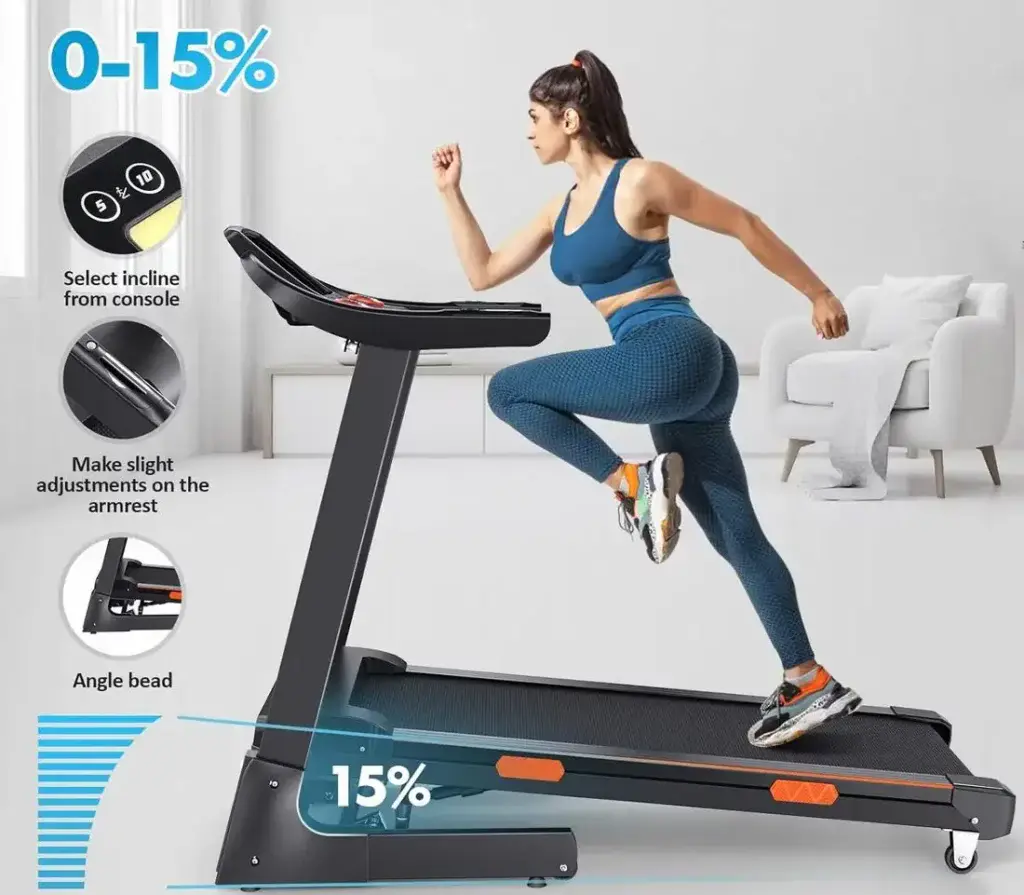
- What is it & How it Works: Again, this generally refers to a specific capability built onto a Motorized treadmill platform. While most motorized treadmills offer incline (e.g., up to 10-15%), true “Incline Trainers” are engineered to reach much steeper maximum inclines, sometimes 20%, 30%, or even 40%.
- Ideal Beginner Profile: Beginners specifically focused on maximizing workout intensity through incline rather than speed. Great for simulating steep hikes, targeting glutes and hamstrings effectively, or burning more calories while walking.
- Beginner Pros: Allows for incredibly intense workouts at lower speeds, which can be gentler on joints than running fast. Excellent tool for specific hill training goals.
- Beginner Cons/Considerations: These machines are typically much more expensive than standard motorized treadmills. They can also be larger and heavier. Critically, ask yourself if you really need that extreme incline range as a beginner. The standard 10-15% incline on most good motorized treadmills provides plenty of challenge for starting out.
The Performance Curve – Curved Treadmills
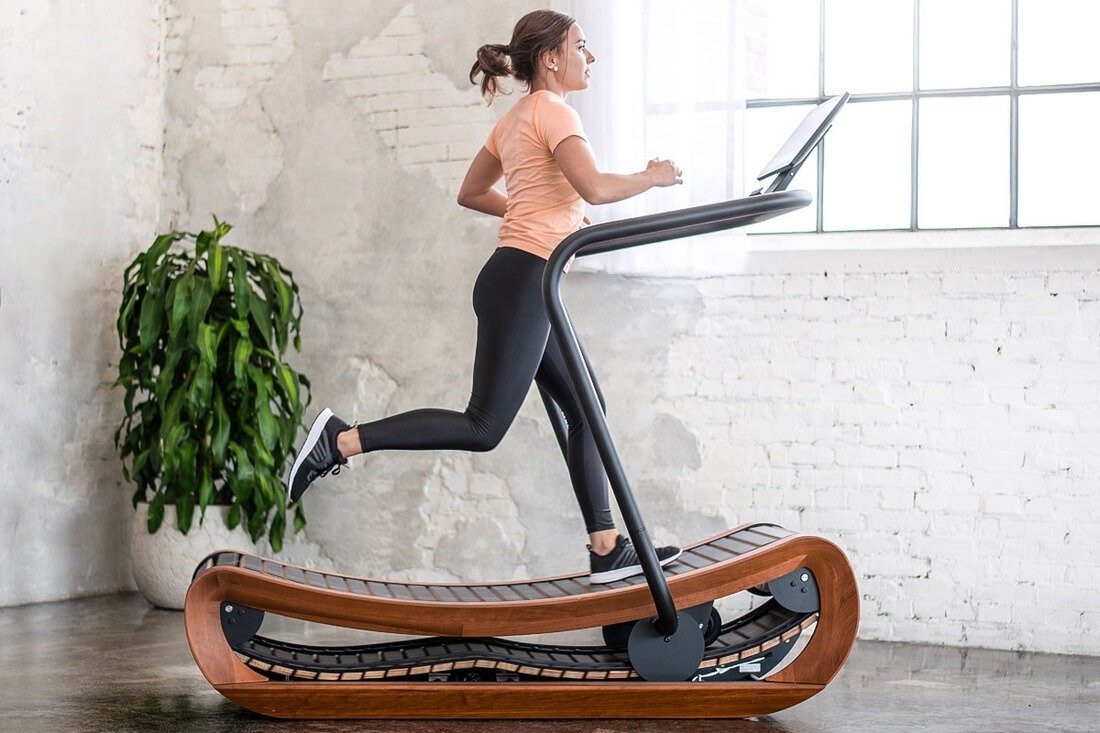
- What is it & How it Works: These stand out visually with their concave, curved running surface. Like manual treadmills, they are non-motorized and self-powered. Your stride position on the curve dictates the speed – move forward to speed up, drift back to slow down.
- Ideal Beginner Profile: Less common for absolute beginners just starting fitness due to cost and learning curve. Often appeals more to experienced runners looking to potentially refine form (encouraging a midfoot strike), increase intensity, or those seeking a very responsive machine for interval training.
- Beginner Pros: Requires no electricity. Can potentially promote better running mechanics. May engage more muscle groups (like hamstrings and glutes) compared to flat-belt running. Offers instant speed changes based on user effort.
- Beginner Cons/Considerations: Significantly more expensive than most other types. The self-powered nature and curved deck have a unique feel that takes getting used to – it can feel more intense initially. Typically offers very few console features or pre-set programs.
Matchmaker – Connecting Treadmill Types to YOUR Beginner Priorities
Okay, you understand the options. Now, let’s find your best fit by considering common beginner priorities:
Priority – Staying Within a Tight Budget?
- Best Matches: Manual treadmills offer the lowest entry price. Entry-level Motorized treadmills provide core functionality without breaking the bank.
- Consider: A mid-range Folding treadmill can offer a good balance of features, convenience, and price if space is also a concern.
- Likely Not: High-Incline and Curved treadmills are premium-priced.
Priority – Dealing with Limited Living Space?
- Best Match: Folding treadmills are specifically designed for this! Look for models with easy-to-use folding mechanisms and vertical storage.
- Consider: Some standard Motorized treadmills have relatively compact footprints even when unfolded. Manual treadmills are often lighter but might not fold as efficiently.
- Likely Not: High-Incline trainers tend to be bulkier.
Priority – Planning Primarily for Walking?
- Best Matches: A Manual treadmill can suffice if budget is key and you don’t mind self-propulsion. Almost any reliable Motorized treadmill will provide an excellent walking experience with controlled speed and optional incline.
- Consider: A basic Folding Motorized model offers walking capability plus storage.
- Likely Not: High-Incline or Curved features are probably unnecessary just for general walking.
Priority – Aiming to Jog or Run Regularly?
- Best Match: A Motorized treadmill is practically essential. Pay close attention to specs like motor power (CHP) and belt size for comfort and durability – check our Key Treadmill Features for Beginners guide!
- Consider: A Curved treadmill if you’re a performance-focused runner with a higher budget.
- Likely Not: Manual treadmills generally aren’t suitable or comfortable for consistent jogging or running.
Priority – Wanting Workout Programs & Tech Features?
- Best Match: Motorized treadmills offer the vast majority of options here, from simple pre-set programs to interactive training platforms, Bluetooth connectivity, heart rate monitors, etc. (features vary widely by model and price).
- Consider: Feature sets scale with price on Motorized models.
- Likely Not: Manual and Curved treadmills are typically very light on electronic features.
Priority – Concerned About Noise Levels?
- Reality Check: All treadmills make some noise (footfalls, belt movement, motor hum).
- Generally: High-quality Motorized treadmills often have quieter motors during operation. Manual and Curved treadmill noise comes primarily from the belt moving over rollers and your foot impact. Build quality significantly impacts noise across all types. Using a treadmill mat can help dampen vibrations.
Beginner FAQs About Treadmill Types
Here are answers to a few common questions beginners ask when choosing:
- Are manual treadmills genuinely hard to use?
They require more initial effort to get the belt moving and maintain speed compared to motorized ones. It feels different. For steady walking, most people adapt quickly. For jogging or varied speeds, it’s much more challenging. - Do folding treadmills feel wobbly or less stable?
Lower-quality or older models might have had this issue, but modern, well-built folding treadmills from reputable brands are generally very sturdy and stable for walking, jogging, and even moderate running within their weight limits. Always check user reviews focusing on stability. - Is a high-incline trainer worth the extra cost for a beginner?
Usually, no. Unless you have very specific goals mimicking intense mountain hiking, the standard 10-15% incline on most motorized treadmills provides plenty of challenge for improving beginner fitness. Master the basics first. - How much does treadmill weight capacity matter?
A lot! Always choose a treadmill with a maximum user weight capacity that comfortably exceeds your own weight (ideally by at least 50 lbs / 20kg) for safety, stability, and motor longevity.
Conclusion
Choosing the right type of treadmill doesn’t have to be daunting now that you understand the core differences.
From the budget-friendly Manual to the versatile Motorized standard, the space-saving Folding feature, the intense Incline option, and the performance-oriented Curved design, each caters to different needs.
Remember, there’s no single “best” type – only the best type for you.
By considering your budget, available space, primary activity (walking, jogging, running), and desire for features, you can confidently narrow down the options and make an informed decision that supports your beginner fitness journey.
What’s Next on Your Treadmill Journey?
Feeling clearer on types? Solidify your knowledge by revisiting our Ultimate Beginner’s Guide to Treadmills.
Ready to dive into the specifics? Explore what really matters in our guide to Key Treadmill Features for Beginners.
Wondering how treadmills compare to other machines? Check out our Treadmill vs. Elliptical comparison.
